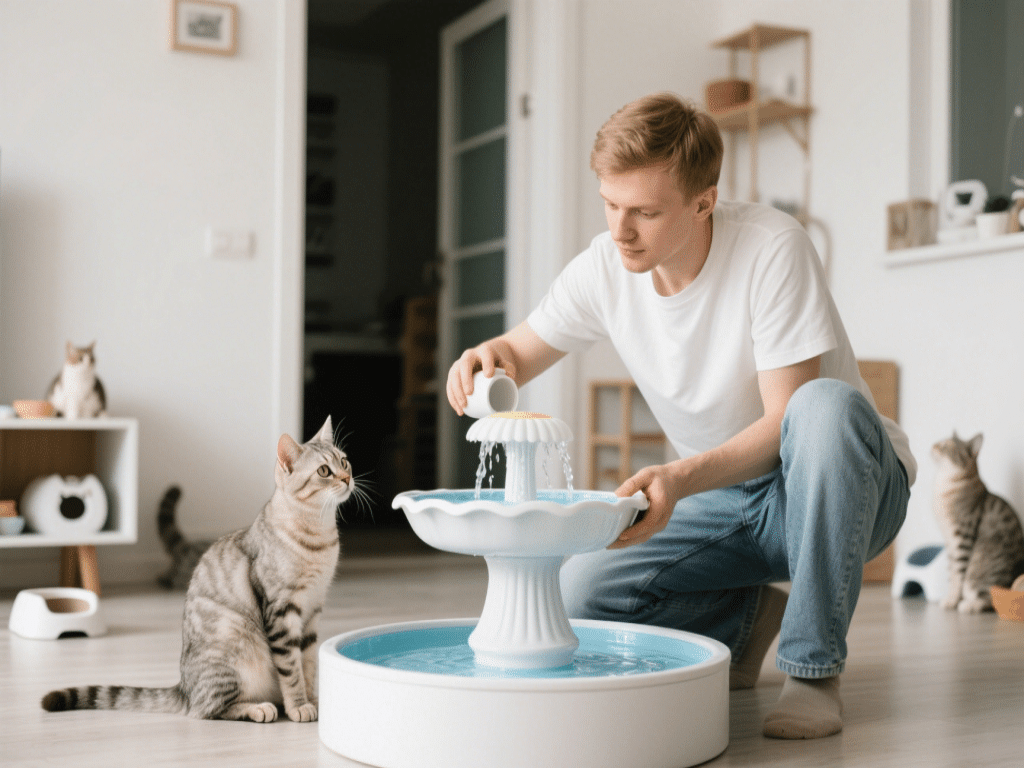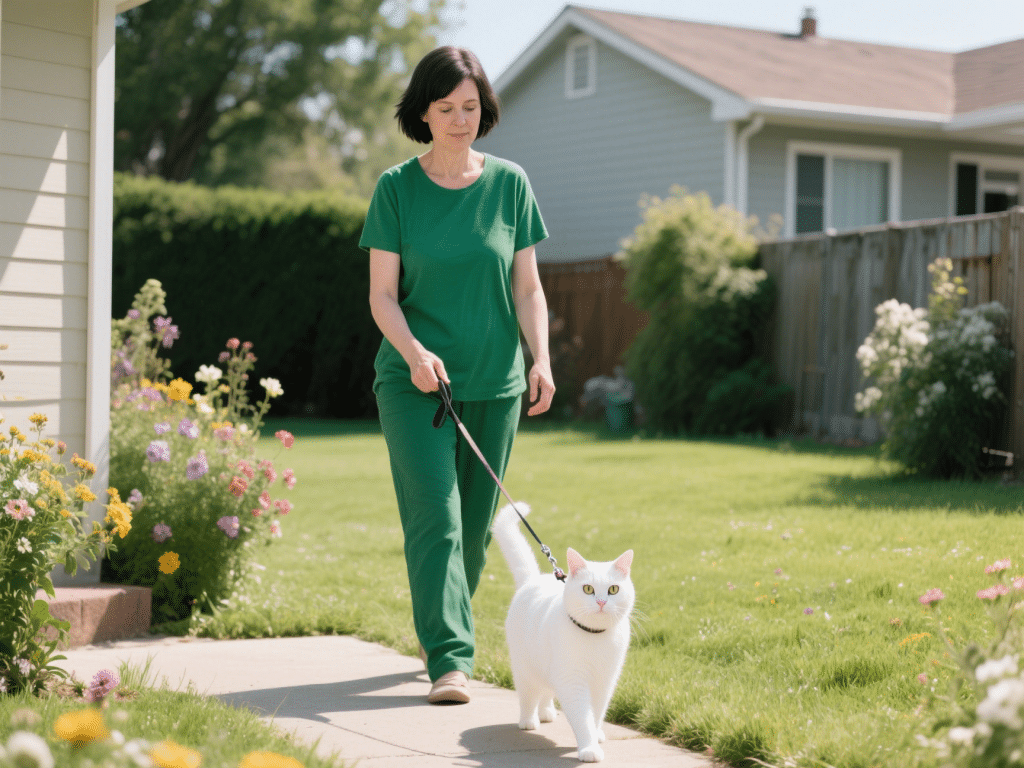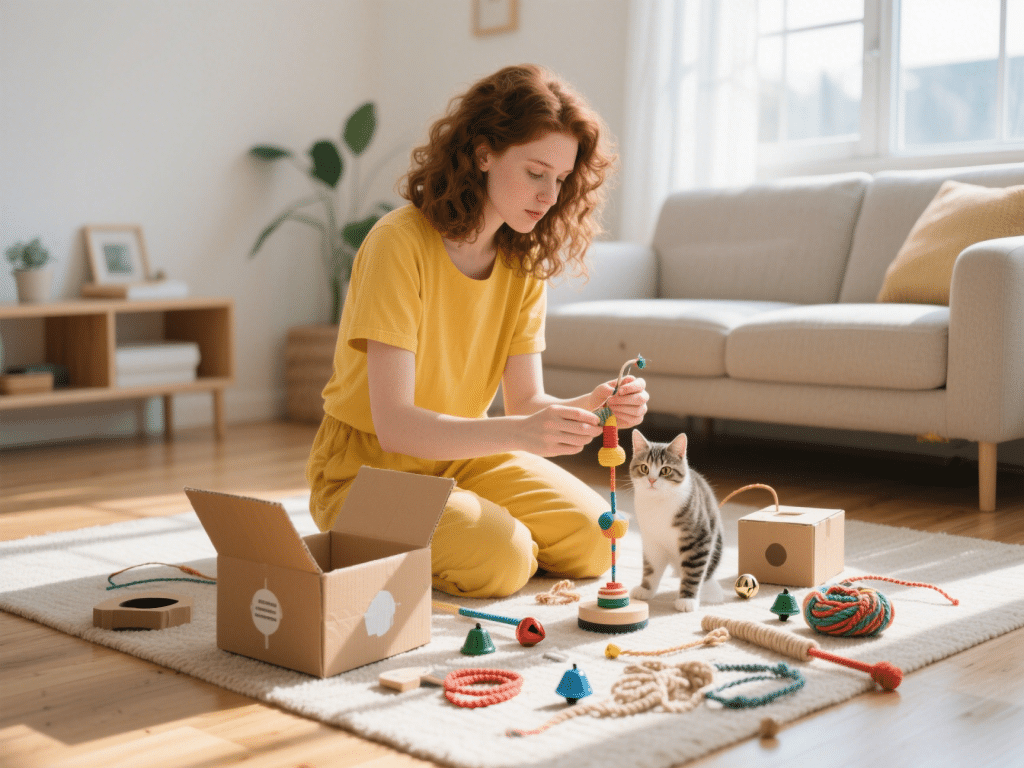Boosting Your Cat’s Enrichment with Puzzle Feeders
Introduction
Cats are inherently curious and intelligent animals. Left to lounge all day with unchallenged minds, they can become bored, overweight, or even stressed. Puzzle feeders offer a simple yet effective way to provide mental stimulation, promote healthy behaviors, and encourage natural hunting instincts. In this article, we will explore the benefits of puzzle feeders, outline different types, offer guidance on selecting the right model for your cat, and share practical tips to ensure safe and rewarding play sessions.
Why Puzzle Feeders Matter
Mental Stimulation
Cats evolved as solitary hunters, spending much of their time solving problems to find food. Puzzle feeders mimic that hunting behavior, forcing your cat to think, paw, and work for each morsel. Engaging your cat’s cognitive skills reduces boredom and frustrates negative behaviors like scratching furniture or excessive vocalization.Promoting Healthy Eating Habits
Free-feeding often leads to overeating, obesity, and associated health issues like diabetes and joint strain. A puzzle feeder slows down eating, making mealtime a controlled activity. By breaking up kibble or treats into smaller portions, your cat takes longer to finish, reducing the risk of vomiting and encouraging more balanced digestion.Physical Exercise
While puzzle feeders primarily challenge the mind, they also encourage movement. Cats may have to paw, bat, or push the feeder to release food. This activity strengthens core muscles, engages coordination, and helps maintain a healthy weight—especially important for indoor cats with limited space to run or jump.Stress Relief and Behavioral Improvement
Providing a consistent enrichment routine can alleviate stressors such as changes in the home environment, the introduction of a new pet, or separation anxiety. Interactive feeding sessions create positive associations, allowing the cat to expend energy constructively rather than developing destructive habits.
Types of Puzzle Feeders
Slow-Feeding Bowls
Design: Raised ridges or spikes force the cat to lap around obstacles to retrieve kibble.
Ideal For: Cats that gobble food quickly; owners seeking minimal setup.
Pros/Cons: Affordable and easy to clean, but may not challenge extremely clever cats.
Treat-Dispensing Toys
Design: Hollow balls or shapes that dispense kibble when rolled or batted.
Ideal For: Active cats who enjoy chasing and batting objects.
Pros/Cons: Encourages play but may require ample floor space; treats may scatter.
Modular Puzzle Boards
Design: Boards with sliding covers, compartments, or levers hiding kibble or treats.
Ideal For: Cats that enjoy more complex problem-solving tasks.
Pros/Cons: Highly engaging, adjustable difficulty levels; may require supervision initially.
Interactive Feeders with Hidden Treats
Design: Multi-level mazes or tunnels where cats must navigate to uncover food.
Ideal For: Owners wanting long-lasting mental challenges.
Pros/Cons: Excellent for sustained engagement; cleaning can be more involved.
Wall-Mounted Puzzle Stations
Design: Attach to walls or doors; cats reach through openings to fish out kibble.
Ideal For: Homes with limited floor space; vertical climbers.
Pros/Cons: Utilizes vertical space; may intimidate shy or elderly cats.
How to Choose the Right Puzzle Feeder
Assess Your Cat’s Personality
Shy or Hesitant Cats: Start with simple slow-feeding bowls to build confidence.
High-Energy or Athletic Cats: Opt for treat-dispensing toys or interactive feeders requiring chasing and batting.
Experienced “Puzzle Masters”: Challenge them with modular puzzle boards or wall-mounted stations featuring multiple steps.
Consider Age and Physical Abilities
Senior Cats or Cats with Arthritis: Select low-profile feeders requiring minimal paw or body movement. Look for non-slippery bases and avoid very small openings that strain the neck.
Kittens or Young Cats: Smaller portions and lightweight plastic feeders are suitable. Ensure no small parts that could be swallowed.
Size of Food Portions
Many puzzle feeders are designed for kibble pieces measuring roughly 5–7 mm in diameter. If your cat eats larger kibble, verify that it fits or choose a feeder with adjustable openings.
Ease of Cleaning
Removable components and dishwasher-safe materials make maintenance simple. Avoid designs with hidden crevices that trap crumbs, as leftover food can harbor bacteria.
Budget and Durability
While premium puzzle feeders often offer customizable difficulty levels and durable plastics, budget-friendly options can still effectively slow feeding and stimulate your cat. Look for non-toxic, BPA-free materials that stand up to scratching and chewing.
Introducing Your Cat to a Puzzle Feeder
Placement Matters
Choose a quiet, distraction-free area. Sudden loud noises or foot traffic may discourage exploration.
Gradual Introduction
Place a small portion of regular kibble on top of the feeder in clear view. Allow your cat to investigate freely. If they hesitate, you can guide a paw toward the kibble or demonstrate by tapping the feeder to show movement.
Positive Reinforcement
Praise or softly encourage your cat each time they interact. If they successfully retrieve a treat, offer gentle verbal praise or a scratch behind the ears. Over time, they will associate the feeder with a rewarding activity.
Monitor Early Sessions
Especially with complex designs, supervise the initial week of use. Ensure your cat does not chew off small parts. If the puzzle frustrates them, reduce difficulty by propping open sliding pieces or leaving sections accessible. Gradually increase complexity as they gain confidence.
Tips for Maximizing Benefits
Rotate Multiple Feeders
Having two or three distinct puzzle feeders prevents habituation. Introduce a new type every few days to maintain novelty.
Incorporate Wet Food (When Appropriate)
Some puzzles are designed for wet food; however, moisture can complicate cleaning. Reserve wet-food puzzles for occasional use or combine kibble with small amounts of wet pate to encourage slower consumption.
Combine with Play Sessions
Encourage your cat to “earn” a puzzle session after a short interactive play period. This sequence taps into their predatory drive: chase a toy mouse, then tackle the puzzle feeder as a reward.
Use Measured Portions
Calculate your cat’s daily caloric requirements and distribute meals through puzzles. For example, if your cat needs 250 kcal/day and each gram of kibble is 4 kcal, dispense roughly 60 grams via two or three scatterings in different feeders. This approach avoids overfeeding.
Adjust Difficulty Over Time
As your cat masters one puzzle, increase the challenge by reducing opening sizes, raising the complexity of slider positions, or switching to a more interactive model. A stepping-stone progression prevents boredom plateau.
Safety and Hygiene Considerations
Inspect for Wear and Tear
Regularly check plastic feeders for cracked edges, loose parts, or discoloration. Replace any compromised pieces to prevent ingestion of broken fragments.
Maintain Strict Cleaning Routine
Wash feeders after each use with warm water and mild, unscented detergent. Rinse thoroughly to remove detergent residue. For stubborn buildup in crevices, use a small brush or pipe cleaner. Let dry completely before reinserting kibble to avoid mold or bacteria growth.
Monitor Caloric Intake
Track how much food is loaded versus how much is consumed. It is easy to overfill a large puzzle feeder. Weigh portions or measure with a standard scoop to ensure accuracy.
Avoid Plastic Powder Exposure
Some low-quality plastics can release potentially harmful compounds. Opt for feeders labeled BPA-free, phthalate-free, and FDA-approved for pet use. Ceramic or stainless steel variants are also available for ultimate safety and longevity.
Supervise Multi-Cat Households
Ambitious felines may attempt to steal kibble from each other’s puzzles. Provide separate stations or stagger feeding times. If jealousy or food guarding arises, reintroduce puzzles one at a time or offer vertical separation (e.g., on separate shelves).
Recommended Brands and Models (Examples)
Note: Availability may vary by region. Always verify the latest customer reviews and consult your veterinarian before introducing new enrichment tools.
Trixie Pet Products Activity Fun Board
Multiple sliding covers and compartments. Adjustable difficulty. Dishwasher-safe trays.
Catit Senses 2.0 Digger
Multiple tubes to encourage digging behavior. Simple to refill and clean.
PetSafe SlimCat Interactive Feeder
Adjustable openings and weighted balls. Lightweight plastic suitable for kittens.
Doc & Phoebe’s Indoor Hunting Feeder
Three hiding logs requiring “hunting” skills. Encourages leaping and pawing.
OurPets IQ Treat Ball for Cats
Weighted ball that dispenses treats as it rolls. Durable, non-toxic materials.
Conclusion
Puzzle feeders represent an affordable and effective method to enhance your cat’s life by addressing mental stimulation, healthy feeding habits, and stress reduction. Starting with simple models and gradually increasing complexity allows cats of all ages and temperaments to reap the benefits. By choosing the right type, maintaining strict hygiene, and observing your cat’s responses, you can foster a healthier, happier companion. Incorporate puzzle feeders alongside regular play sessions, and watch as your feline friend thrives—both physically and mentally.
RECOMMENDED NEWS

How to Choose the Right Water Bowl for Your Pet’s Health
2025-06-12

Strategies for Cleaning Your Pet’s Ears Safely at Home
2025-06-10

Training Your Dog to Be Calm During Vet Visits
2025-06-08

Senior Pet Care: Special Considerations for Older Cats and Dogs
2025-06-12

Safe Ways to Introduce Your Cat to the Outdoors
2025-06-12

DIY Cat Enrichment Toys to Stimulate Your Cat’s Mind
2025-06-10
Comments on "Boosting Your Cat’s Enrichment with Puzzle Feeders" :